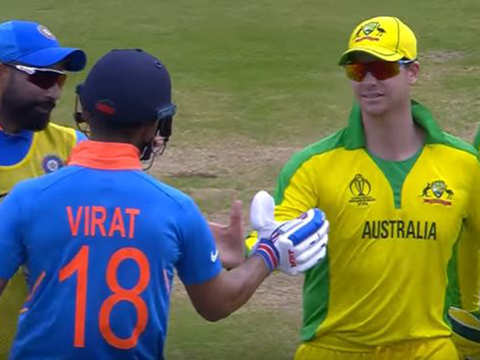Cricket, often hailed as a gentleman’s game, is a sport that has captured the hearts of millions around the world. Its unique blend of strategy, skill, and endurance makes it one of the most beloved sports globally. But what goes on behind the scenes of a cricket match? How do teams strategize, and what are the key elements of a match analysis? In this blog post, we will delve deep into the world of cricket match analysis, breaking down the game into its essential components to help you gain a deeper appreciation for this beautiful sport.
Introduction
Cricket is a sport that transcends boundaries and brings together people from diverse cultures and backgrounds. Whether it’s the intensity of a Test match, the excitement of a One Day International (ODI), or the frenzy of a T20 game, cricket offers something for everyone. But what makes cricket truly fascinating is the depth of analysis that goes into every match.
Understanding Cricket Match Analysis
Cricket match analysis is a process that involves dissecting various aspects of a game to gain insights into team performance, player strategies, and key moments that shape the outcome. It’s like peeling back the layers of an onion to reveal its innermost core.
Let’s break down the key components of cricket match analysis:
1. Player Performance Analysis
One of the fundamental aspects of match analysis is evaluating player performances. Analysts closely examine individual player statistics, including batting and bowling averages, strike rates, and fielding contributions. This data helps teams identify their star performers and areas where players need improvement.
For instance, if a batsman consistently performs well against a particular type of bowling but struggles against another, the team can strategize accordingly. Similarly, a bowler’s performance against left-handed and right-handed batsmen can influence field placements and bowling rotations.
2. Bowling and Batting Strategies
Cricket is a game of constant strategy and tactics. Teams formulate plans for both batting and bowling, which are tailored to exploit the weaknesses of the opposition. Bowlers aim to target specific areas on the pitch to create opportunities, while batsmen look for gaps in the field to score runs.
Match analysts use data from previous encounters, pitch conditions, and player strengths and weaknesses to fine-tune these strategies. They also keep a close eye on the opposition’s tactics, making adjustments as the game unfolds.
3. Pitch and Weather Analysis
The condition of the pitch and the weather can significantly impact the outcome of a cricket match. Pitches vary in their behavior, offering assistance to either batsmen or bowlers. Similarly, weather conditions, such as overcast skies, can aid swing and seam movement for fast bowlers.
Analysts study pitch reports, weather forecasts, and historical data to anticipate how these factors might influence the game. This information helps teams make critical decisions like team selection and whether to bat or bowl first.
4. Field Placement and Running Between the Wickets
Field placements play a crucial role in cricket match analysis. Captains strategically position fielders based on the type of bowler and the batsman at the crease. Analysts analyze the effectiveness of field placements and suggest changes to create pressure on the opposition.
Running between the wickets is another aspect often overlooked by casual viewers. Analysts track the speed at which batsmen complete runs and identify opportunities for quick singles or converting ones into twos. This can be the difference between a competitive total and a match-winning one.
5. Decision Review System (DRS) Analysis
The Decision Review System has revolutionized the way umpiring decisions are made in cricket. Match analysts closely scrutinize DRS data, including ball tracking and edge detection, to assess the accuracy of on-field decisions. This technology has brought a new layer of fairness to the game and has a significant impact on match outcomes.
6. Key Moments and Turning Points
Cricket is a game of moments, and match analysts are experts at identifying key turning points in a match. Whether it’s a crucial wicket, a brilliant catch, or a game-changing partnership, these moments can shift the momentum in favor of one team.
Analysts assess the impact of these moments and help teams capitalize on them. They also study how players handle pressure situations and whether they tend to thrive or falter when the game is on the line.
Conclusion
Cricket match analysis is a meticulous process that involves examining every facet of the game to gain a competitive edge. It requires a deep understanding of the sport, access to cutting-edge technology, and a keen eye for detail. The insights provided by match analysts are invaluable to teams, helping them make informed decisions and refine their strategies.
As cricket continues to evolve, so does the art of match analysis. With advancements in technology and a growing emphasis on data-driven decisions, the role of analysts in the sport has become more critical than ever. So, the next time you watch a cricket match, remember that behind every boundary, wicket, and stunning catch, there’s a team of analysts working tirelessly to unravel the mysteries of the game.
Cricket, with its rich history and intricate strategies, is a sport like no other. It’s a testament to the beauty of human skill, teamwork, and determination. And through the lens of match analysis, we can appreciate this beautiful game even more, understanding the countless hours of preparation and analysis that go into every match.
In conclusion, cricket match analysis is the art of unraveling the complexities of the game, turning it from a sport into a science. It’s a celebration of strategy, skill, and the relentless pursuit of excellence. So, the next time you watch a cricket match, remember that there’s more to it than meets the eye, and behind every play, there’s a story waiting to be told.



